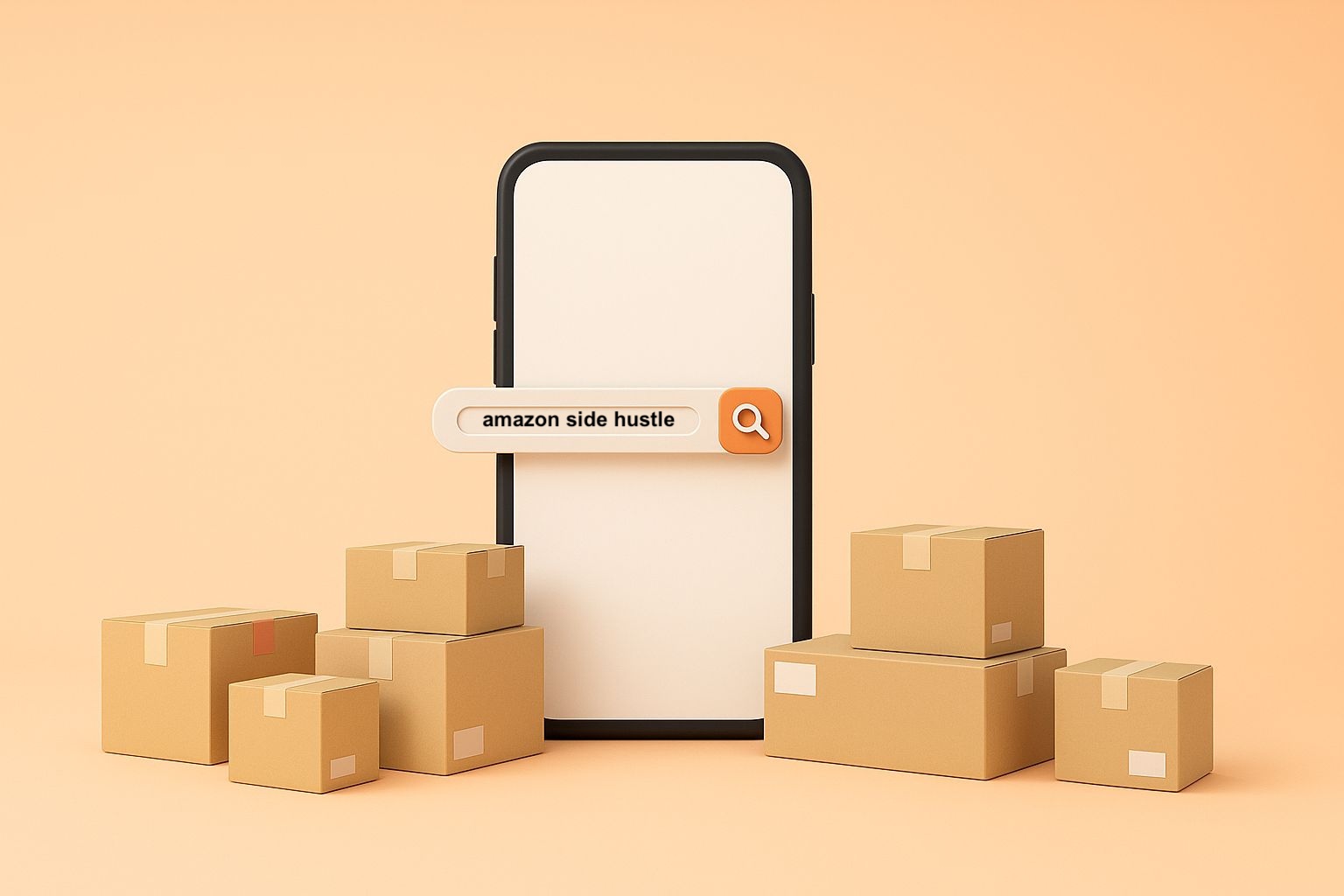How can sellers sell on Amazon in the USA? A short guide

Revenue of Amazon in Germany 2019: 22.23 billion US dollars. Revenue of Amazon in North America 2019: 170.77 billion US dollars.
These figures illustrate what everyone actually knows: The revenue potential on Amazon.de is already large – in contrast to the potential on Amazon.com, it is almost ridiculously small. It is no wonder that many German sellers also want to expand their business to the motherland of the corporation. However, to sell successfully on Amazon USA, a certain amount of knowledge is necessary.
The peculiarities of the American market therefore prevent many marketplace sellers in this country from daring to internationalize. The hurdles are too high, the concerns too great. But is that really the case? Do sellers have to invest the same amount of money, establish an American company, and ideally gather an army of US-experienced lawyers behind them in order to sell on Amazon in the USA?
We watched the popular YouTube webinar by quantified markets with Till Andernach, the expert on expansion to Amazon.com, and summarize for you why the effort is worth it and how difficult (or easy?) it really is to expand your Amazon business to North America.
Why German sellers should sell on Amazon.com
The perhaps most compelling argument for internationalization towards the West: The USA is the largest market economy in the world with a huge e-commerce sector. And Amazon currently holds about 50% of this e-commerce. This also hides a very large potential for German companies on Amazon USA: When sellers sell on Amazon.com, they have access to an Amazon marketplace that is twice as large as all other Amazon marketplaces combined.
For Till Andernach, however, another component comes into play: the diversification of the risk profile. For sellers who generate their main revenue through Amazon, an account suspension or a drop in sales on the German marketplace is equivalent to a disaster. Many sellers therefore want to establish a second pillar.
And this can even be done without the need to explore new platforms. No Amazon seller has to familiarize themselves with other sales channels, such as eBay or retail. On the contrary: Amazon sellers can transfer what they already do well to Amazon USA. Sellers operate through a separate seller account, allowing them not only to prepare for revenue fluctuations on one of their marketplaces but also to better compensate for the suspension of a Seller Central access. Because account suspensions across seller accounts are hardly to be expected, even with linked accounts. No case is known to Till Andernach. It should also be noted that the American seller account is similar to the European one in that it is a “Unified Account” that includes not only the USA but all of North America.
Selling on Amazon in the USA: Hurdles and Effort
Many Amazon sellers hesitate to take the step into the USA. And indeed, there are one or two hurdles that need to be overcome. Overall, however, it is easier to sell on Amazon in North America than most believe. In principle, the complexity of entering the market in the USA depends on the product, the associated product liability, and the legal regulations that must be adhered to.

In contrast, topics such as company registration and tax compliance in the USA are often associated with less effort than in Germany. We will now look at the various focal points that play a role for sellers who want to sell on Amazon in the USA.
Creating offers
Creating offers is essentially not much different than in Europe. As with PAN-EU sales, one should ensure that the product detail page is written in the appropriate local language, which in the USA means in English. Cultural differences should also be taken into account when creating offers. The process is the same as in Europe: select the appropriate target country and upload the inventory file template.
Goods handling
One particularity is also the handling of goods. First, the goods must be imported into the United States. Confusion can arise regarding the designation of the exporter and the importer of record. Ultimately, the seller who brings the goods into the destination country is the importer of record. If the goods come from their own warehouse in Germany, it may even be the case that they are also the exporter of record. This can lead to confusion even with established international freight forwarders, as Till illustrates with an example in the interview. One thing should be clear, though: even if the goods go to Amazon’s warehouse, Amazon itself is never the importer.
Sales Tax in the USA
Most Amazon sellers probably think a lot about sales tax. Similar to the European Union, sellers are only liable for tax in the states where they have inventory stored. The good news is that Amazon already takes care of the sales tax remittance in many states. In these states, sellers do not have to worry about anything further.
Different in states that do not appear on this list. Here, sellers may need to apply for a tax identification number and enter it in Seller Central if they want to sell on Amazon USA. However, this does not necessarily have to happen before the start of sales, as the registration costs money.
Only when revenues in these states exceed a critical threshold does it make sense to request a tax ID. In that case, there will be a recalculation by the authority, for which companies should have set aside a portion of their revenue in advance. Therefore, sellers should not wait too long with the registration, even though there is no specified revenue size.

Whether a tax ID is necessary is not solely dependent on revenue but also on the location of the goods. Similar to PAN-EU shipping, sales tax is incurred where the threshold of inventory is exceeded. Since Amazon distributes inventory to various FBA centers in different states, sales tax may also be applicable there.
Another problem arises with the question of how the tax liability in the various states can even be tracked when Amazon itself does not provide the data. At this point, Till recommends the tool TaxJar. It helps the seller track whether and where they have exceeded the threshold and what the final tax liability is. This way, the seller can react early, build the necessary reserves, and apply for the sales tax license in a timely manner.
Those who want to be on the safe side can hire an American tax advisor instead of using TaxJar. While this incurs additional costs, a procedure for tax evasion will ultimately be significantly more expensive.
UG, GmbH or an American Corporation Inc.?
Contrary to rumors, it is not necessary to establish an American company for expansion. Theoretically, it is also possible to sell on Amazon in the USA as a UG or GmbH. However, the downside is that there is always a residual risk regarding product liability in the USA, even with the simplest and safest product. The question is: Do I, as a seller, want my German main business to be liable for the risks of the presumably much smaller US branch?
However, in addition to establishing an American company, there are many other options. A good product liability insurance can be an alternative, as can the establishment of a German UG, with which sellers can then sell in the USA, for example, with Amazon FBA. The advantage: With a German company, there is a maximum sales tax liability; with an American company, on the other hand, an income tax liability and a high administrative burden are automatically triggered.

For the start overseas, this question does not need to be definitively answered. Unlike converting a German seller account to another corporate form, this endeavor with a US account is much simpler and usually only takes a few minutes of effort.
And what about the bank account?
As an argument for establishing an American company, it is often stated that sellers cannot obtain an American business account without one, which they need to sell on Amazon in the USA. This is true – however, German sellers do not actually need an American bank account. Amazon payouts can also be made to a German account. While there are exchange fees of 4%, these are bearable in the startup phase compared to the financial burden of an incorporation costing several thousand euros.
An alternative can also be payment service providers that offer their customers an American account number. This reduces the exchange fees to about 1%. In Seller Central, the payment method can be changed at any time.
Product liability and compliance
One rumor is true: Sellers who sell on Amazon in the USA must thoroughly familiarize themselves with the legal regulations of the product category and the issue of product liability in advance. This is because American law indeed makes it much easier to sue companies for product risks.
Helpful measures can include warning labels on the product packaging or the product itself. Laboratory tests may also be necessary. It is advisable to collaborate with appropriately specialized partners in the USA, as they know exactly which rules apply to which products and where sellers need to make adjustments.
Conclusion: Hurdles? Yes, but none that are insurmountable
The reluctance of many German sellers to sell on Amazon USA is significant, but ultimately unfounded. It is no surprise that there are some hurdles to overcome, as this is an internationalization of the Amazon business. However, this is relatively manageable compared to other industries, especially when sellers use Amazon FBA.
Nevertheless, it is important to prepare for this step appropriately. In particular, research regarding the requirements for product liability and compliance should not be taken lightly. Collaboration with an American partner should be considered in this regard.
For those who want to gather more in-depth information or seek advice, they can do so at The Tide is Turning. Additionally, we have embedded the complete YouTube webinar for you.
Image credits in the order of the images: © Mariusz Blach – stock.adobe.com / © WindyNight – stock.adobe.com / © my_stock – stock.adobe.com / © Pixel-Shot – stock.adobe.com







